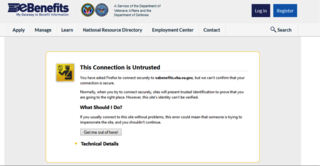Invariably, in every workshop I have presented to clients over the last 10 years, I've been asked the question, “When should I give my house (or other assets) to the kids?” My answer is quick, swift and with a smile: “Never. In fact, you never want to give anything to anyone you love.”
 That usually gets their attention and draws a frown – until I explain. Giving assets to your children defeats the very thing the client is often attempting to accomplish. When I ask why they want to give their assets to the kids, the response 99 percent of the time is that they want to protect the assets. I respond, so the way you protect your assets from your creditors and predators is to give it to your kids so those assets are subject to all their creditors and predators? Who has more creditors and predators, you or your kids? And then I get the blank stare.
That usually gets their attention and draws a frown – until I explain. Giving assets to your children defeats the very thing the client is often attempting to accomplish. When I ask why they want to give their assets to the kids, the response 99 percent of the time is that they want to protect the assets. I respond, so the way you protect your assets from your creditors and predators is to give it to your kids so those assets are subject to all their creditors and predators? Who has more creditors and predators, you or your kids? And then I get the blank stare.
The key element when doing asset protection planning from general creditors and predators, or for Medicaid eligibility and long-term care, is to be properly informed of the options available. Not only can transfers in assets to the kids subject your assets to risk by the kids' bankruptcy, divorce, lawsuits, and even your child's death, but it could have adverse income tax consequences.
Transfers to children are at a “carry over” tax basis to them; that is, they inherit the asset at what you paid for it. This could be extremely detrimental in the case of highly appreciated assets. In fact, it creates an income tax on sale that would not otherwise have been due, had the client held it to death and then transferred it to the children. The key point is to know how to get the best of both worlds.
That's where the IPUG™ protection trust is so essential. The Irrevocable Pure Grantor Trust™ allows the grantor to be the trustee, to benefit from the trust (to the extent they so desire while understanding the impact) and to be able to change their beneficiaries or any other provisions they desire. This is very empowering to clients who traditionally believe once you create an irrevocable trust, you can't change it, you can't benefit from it, and you can't control it.
In fact, you can do all three; it's just in how you do it. The core distinction in an IPUG™ trust is that you must give up only what you want to protect. For example, if you want to protect your assets, you must give up, forever, the right to own those assets. But you do not have to give up the right to control those assets, manage those assets or even get the beneficial interest and use of those assets! The most common way grantors benefit from their assets that they no longer can reach is by living in the house they have transferred to an IPUG trust, or by continuing to maintain receipt of the income and dividends from any cash investments or brokerage accounts in which they have put inside the IPUG™. Most people realize they don't really need the assets; they just need the income produced from them and want to maintain control.
For those who do need access to their assets, they are not candidates for the use of the IPUG™, or any other protection trust. They would use a typical revocable living trust, which accomplishes their estate planning needs and can provide asset protection after death. That's why you never want to give the money to the kids after you die either. One of the greatest advantages seniors have is, after death, the ability to transfer their assets to their children in a trust that the children can control and benefit from any time they want – but creditors or predators can never invade those assets, for the life of the child! This includes the government, lawsuits, divorces, bankruptcies, and even nursing homes.
The money is flat-out safe.
Why would anyone give anything to anyone they love when they can give it to an IPUG trust that protects it for them while they're alive and for their children for their lifetimes after they're gone.
If you aren't a member of Lawyers With Purpose and want to know more about what we have to offer (which is tons of technical legal support) for your estate or elder law practice, register for our Having The Time To Have It All webinar on Thursday, July 23rd at 2 EST. Reserve your spot today to learn more about creating the practice of your dreams.
David J. Zumpano, Esq, CPA, Co-founder Lawyers With Purpose, Founder and Senior Partner of Estate Planning Law Center










